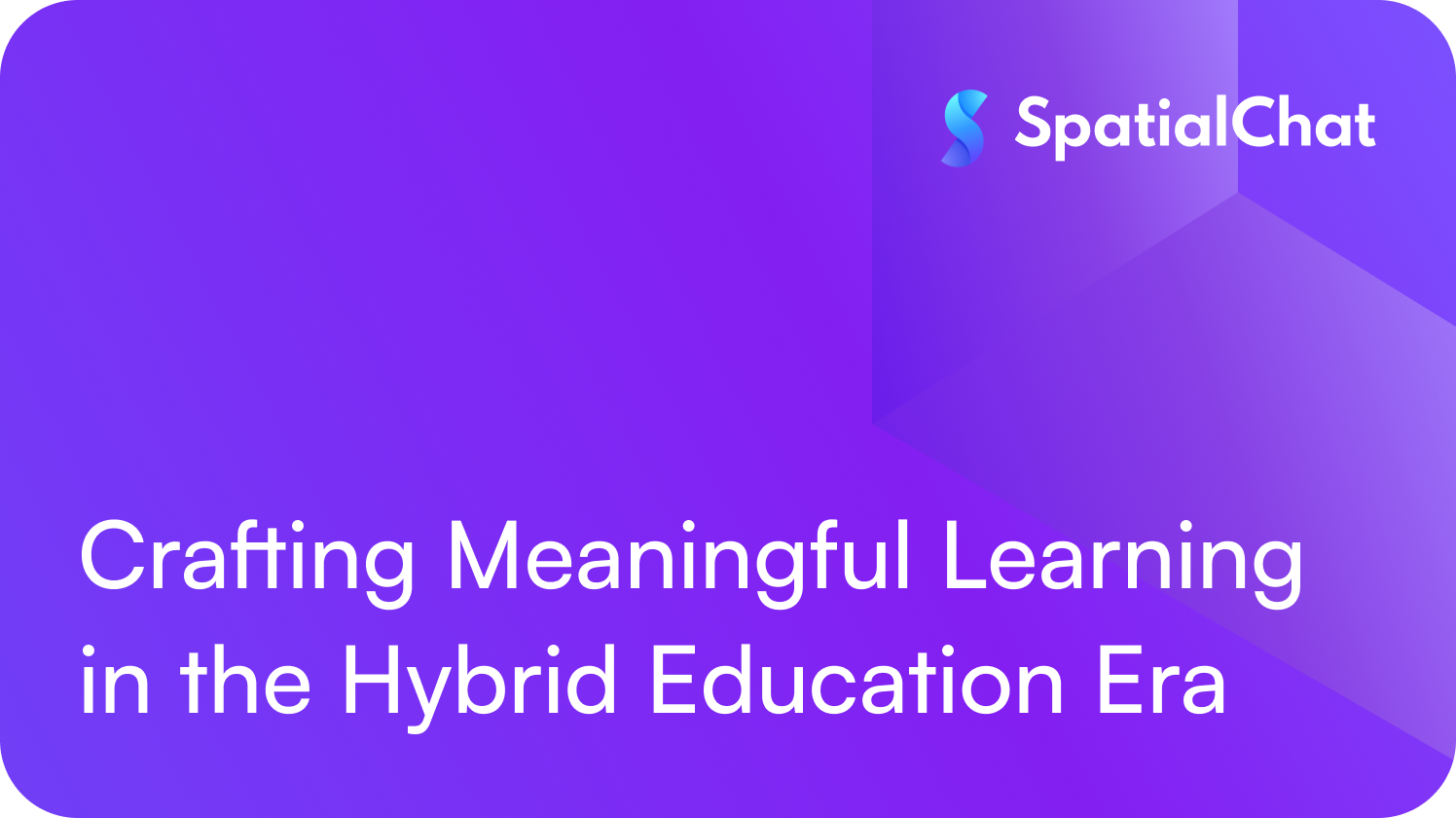As the urgency of pandemic-era digital learning fades, universities face a new challenge: how to evolve their hybrid and online offerings into engaging, inclusive, and high-quality experiences that meet the needs of today’s learners.
Hybrid and online education have moved from being emergency stopgaps to essential components of the academic experience. Yet many institutions are still using the same tools and methods they relied on during the crisis. Simply repurposing old teaching approaches for new platforms is no longer enough. To truly support student success, universities need to think differently about how they design and deliver education in an increasingly digital world.
Moving Beyond the Crisis Mindset
The early days of remote learning were about survival: getting classes online as quickly as possible, using whatever tools were available. But now, there's a pressing need to break out of that "crisis mode" and embrace the full potential of hybrid learning models. These models offer opportunities for broader accessibility, greater flexibility, and more personalized instruction. However, realizing this potential requires more than just upgraded tech. It demands a shift in culture, mindset, and pedagogical practice.
Institutions must recognize that hybrid learning is not just a different format; it’s a fundamentally different way of engaging with students. It blurs the lines between physical and digital spaces and requires new approaches to collaboration, interaction, and community-building. Educators need time and support to make this shift, and that begins with faculty development.
Supporting Faculty Through the Transition
A major hurdle in transforming hybrid learning is the wide variation in digital literacy among faculty members. While some instructors have embraced new technologies with enthusiasm, others continue to struggle with the basics. Without adequate support, even the best platforms will fall short.
To address this, universities must provide consistent, accessible, and relevant professional development. Faculty need training not only on how to use digital tools, but also on how to design effective learning experiences across modalities. Teaching in a hybrid environment is complex—it means planning for both in-person and remote learners, navigating classroom technology, and rethinking assessments and engagement strategies.
When educators feel confident in their digital skills, they’re better positioned to experiment, innovate, and create more inclusive learning environments. This investment in faculty readiness is key to long-term success.
Designing for Engagement and Comfort
Student engagement is one of the most persistent challenges in hybrid and online classrooms. Many instructors report difficulty connecting with students who turn off their cameras or remain passive in virtual settings. But forcing students to be “on” without addressing the root causes (privacy concerns, home distractions, or social anxiety) can do more harm than good.
Instead, institutions should prioritize building digital environments that promote psychological safety and equity. This includes offering features like virtual backgrounds or selective video sharing, so students can participate without exposing their personal surroundings. These small, thoughtful design choices can make a big difference in making students feel seen, supported, and willing to engage.
Creating opportunities for interaction is also critical. Discussion forums, breakout rooms, collaborative tools, and real-time feedback mechanisms help replicate the energy of a physical classroom and foster a sense of belonging, even at a distance.
From “One-Size-Fits-All” to “One-Size-Fits-One”
Higher education has long followed a standardized model, assuming that most students learn in the same way. But the pandemic exposed just how diverse students’ learning styles, life circumstances, and needs really are.
Hybrid learning offers a powerful opportunity to embrace this diversity. With greater flexibility in how, when, and where students engage, institutions can move toward a more student-centered approach, one that prioritizes autonomy, accessibility, and personalization. This shift requires more than policy changes, and demands empathy, creativity, and a willingness to challenge traditional norms.
Final Thought
Hybrid and online learning are no longer fringe experiments. They’re central to the future of education. But to make them truly effective, institutions must go beyond digital tools and invest in people, pedagogy, and culture. By reimagining what learning looks like in a connected world, higher education can become more responsive, more equitable, and more empowering for every student.
